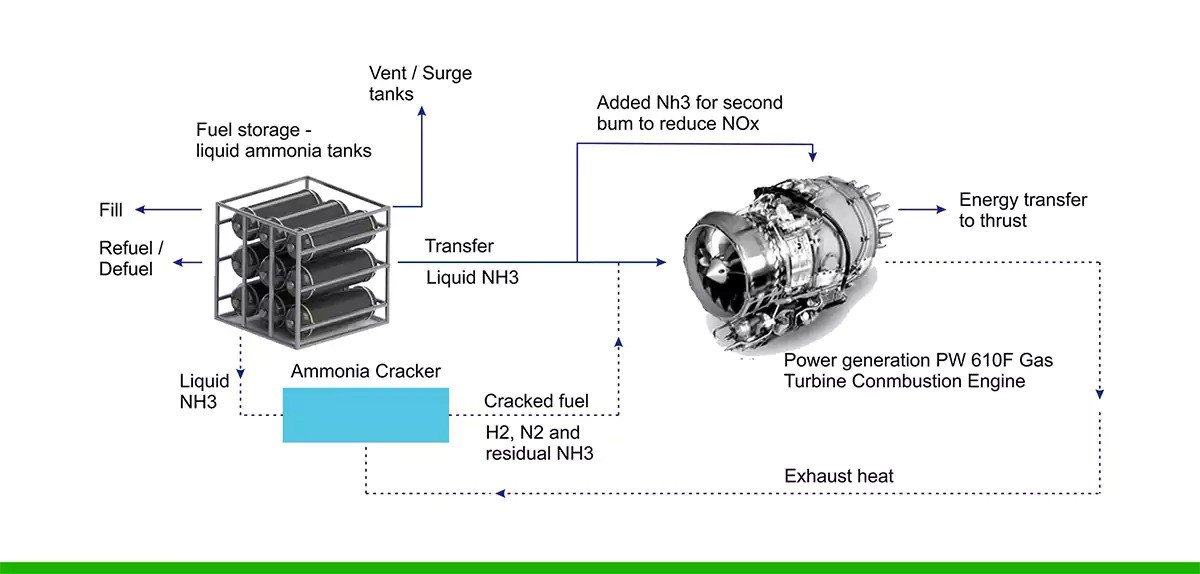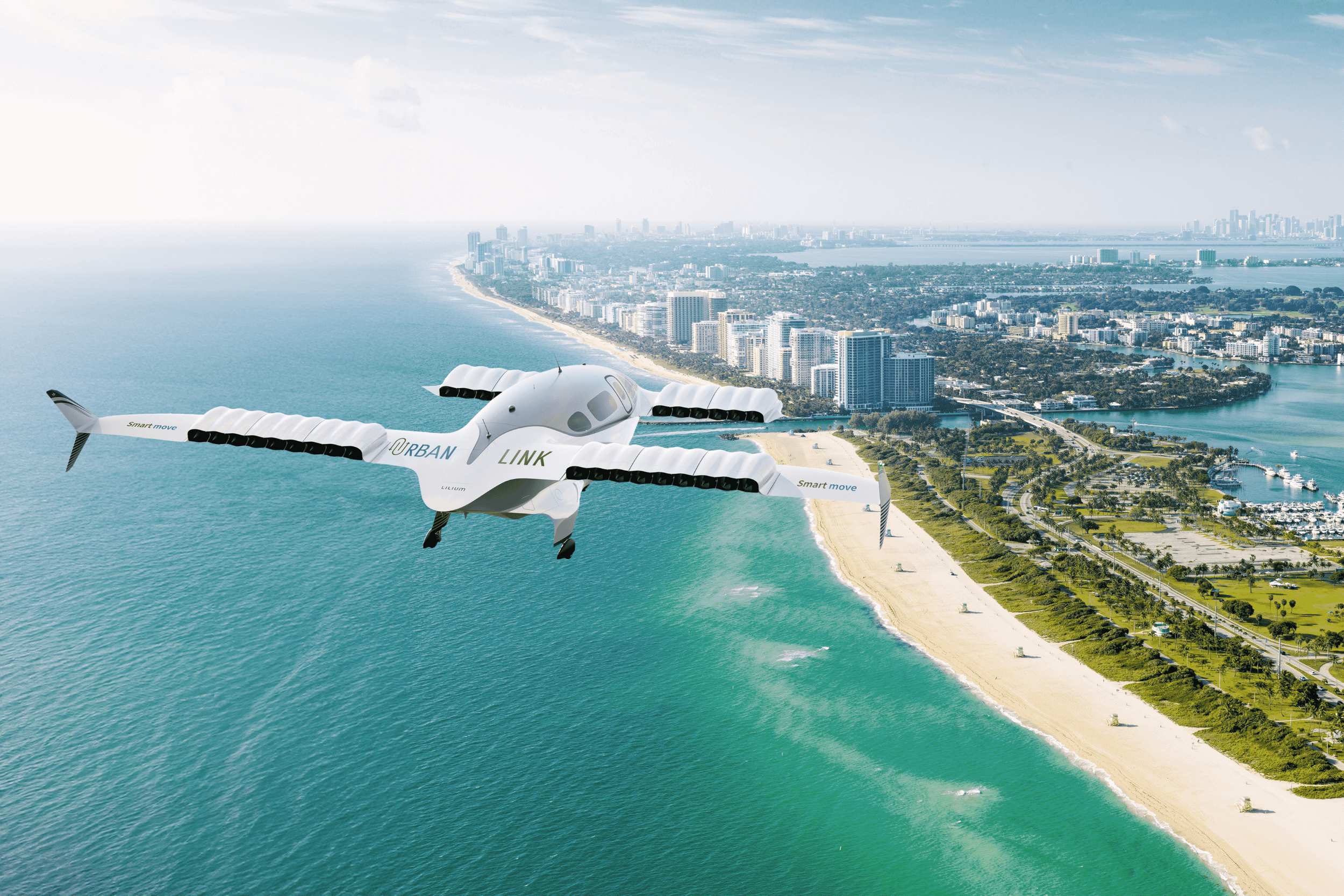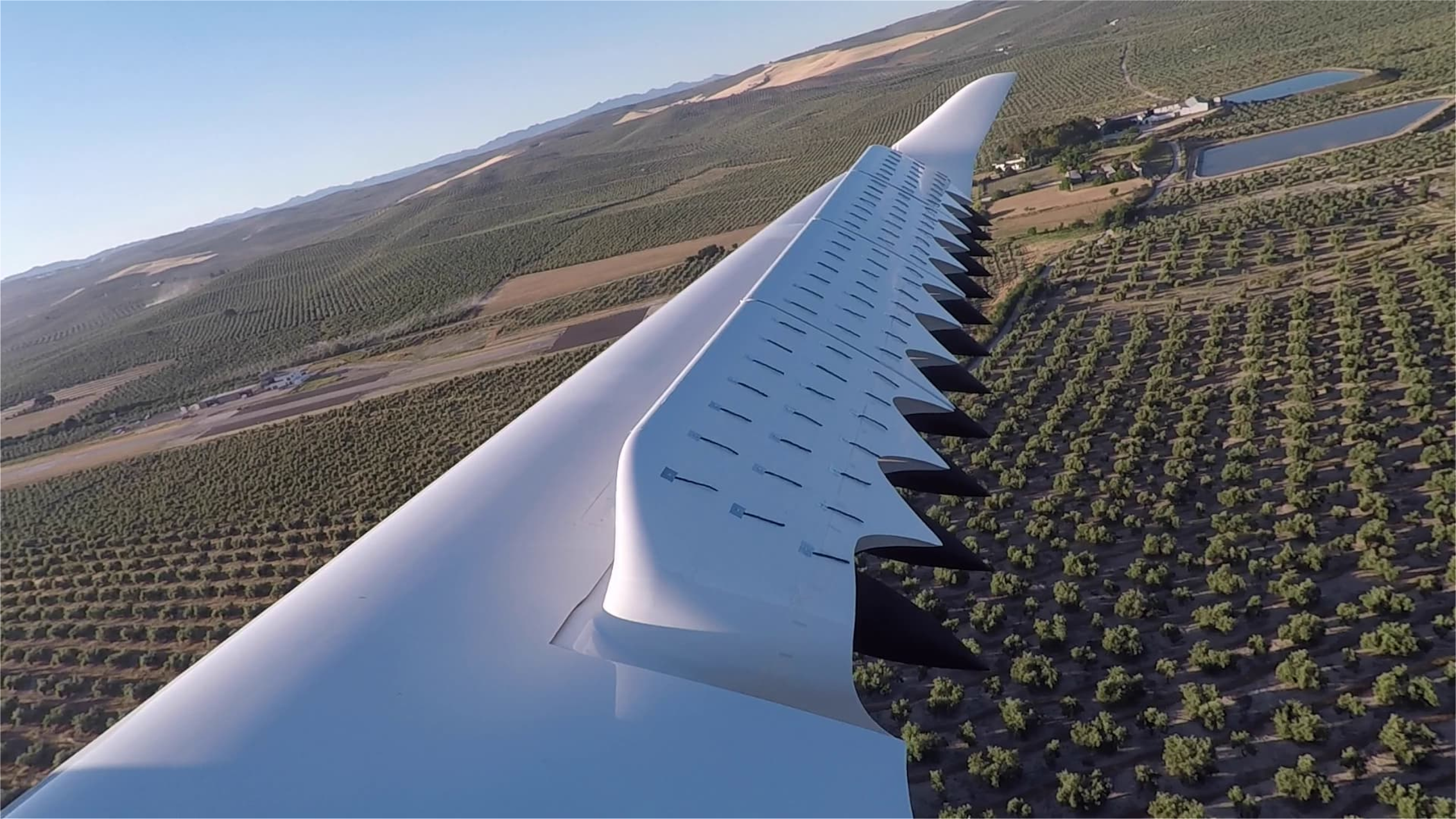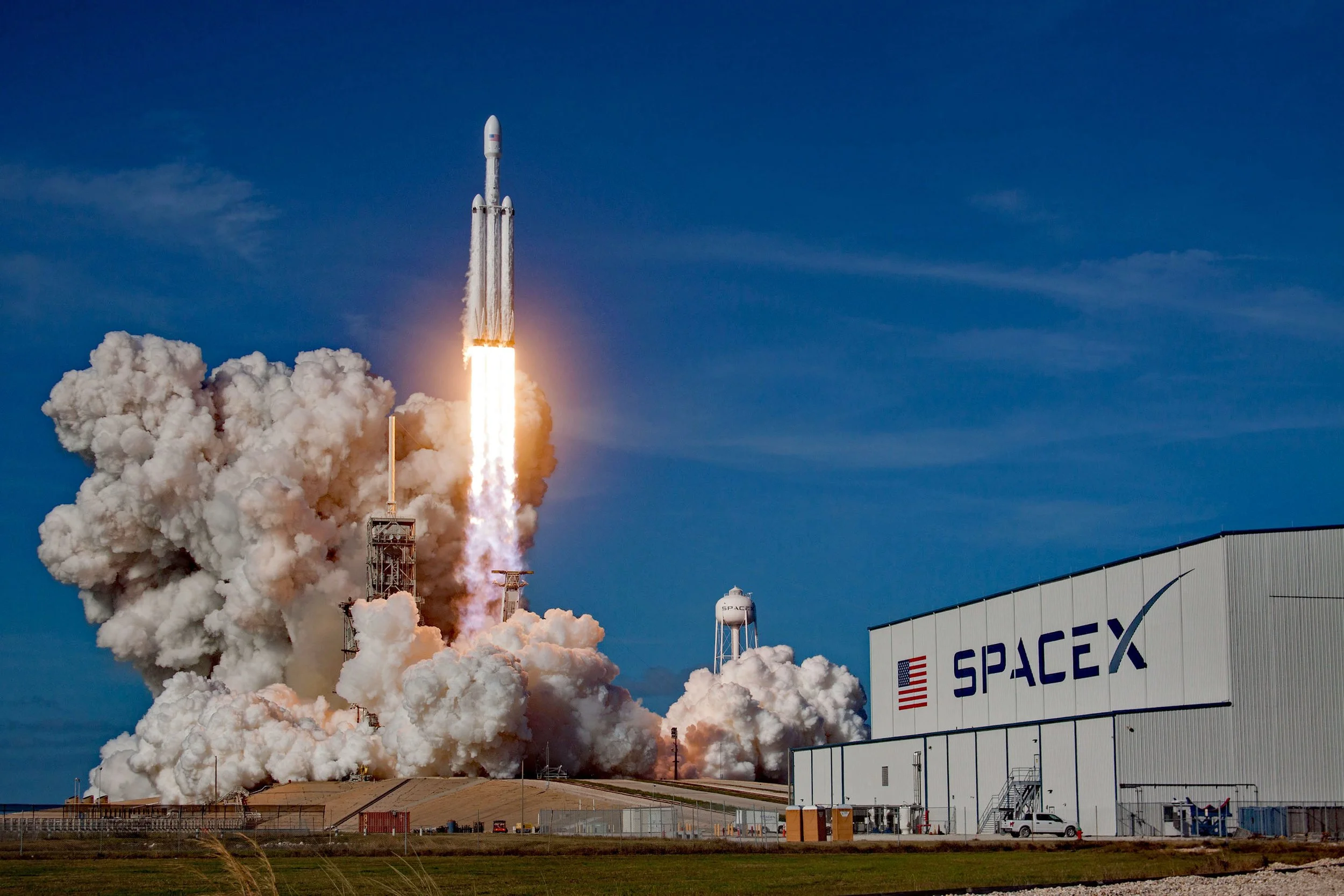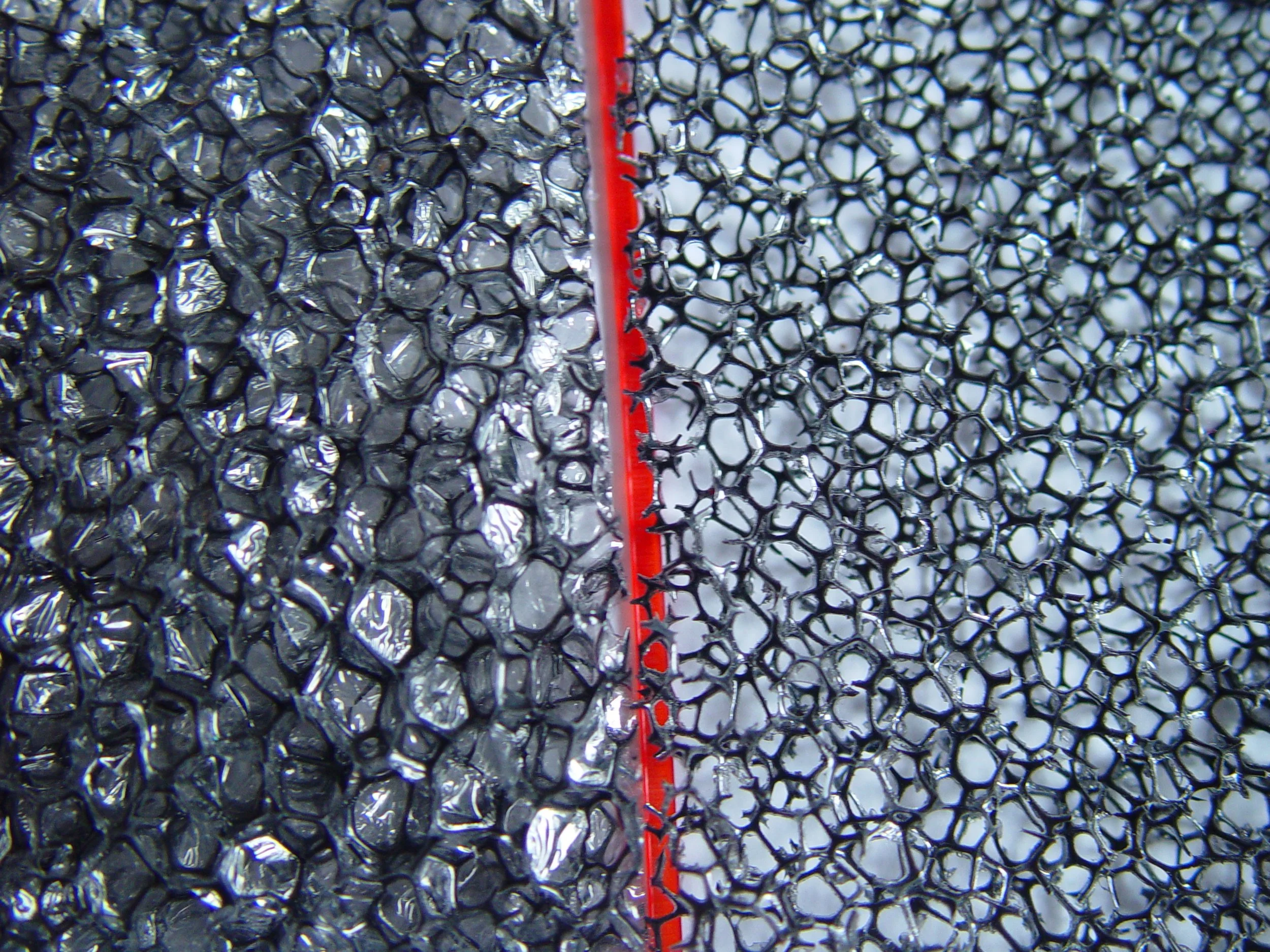Ammonia as an Aviation Fuel
The use of Green ammonia fuel in aviation offers the best medium term avenue for the complete decarbonisation of the industry, currently producing some 2% of energy related CO2 emissions, but 3.5% of total radiative forcing due to releases of non-CO2 warming gases. Aviation emissions are rising faster than those of any other transport mode and the industry’s growth is outpacing efficiency improvements in new aircraft.
Aviation - an Industry under Pressure
The aviation industry is under growing pressure to reduce its carbon footprint - currently around 1Gt/ year, or 2.5% of global CO2 emissions. In addition the water vapour, NOx and soot that aircraft introduce into the upper atmosphere multiply the radiative forcing of the CO2 emissions alone by a factor of 1.9 - 4.7. Aviation may therefore be responsible, in the worst case, for as much as 10% of global warming.
International aviation emissions are also growing rapidly: from 1990 to 2019 they increased by 146% (compared to 34% for shipping). Emissions plunged in 2020 owing to COVID travel restrictions but have now resumed their upward trajectory.
In 2022 the industry’s specialist UN Body, ICAO, adopted an ‘aspirational goal’ to achieve net zero industry emissions by 2050 in line with the Paris Agreement, stating:
“To achieve the global aspirational goals and to promote sustainable growth of international aviation, ICAO is pursuing a basket of measures including aircraft technology improvements, operational improvements, sustainable aviation fuels, and market-based measures (CORSIA)” - where CORSIA is ICAO’s carbon offsetting scheme.
ICAO presents little detail of how it intends to achieve its net zero target, but either ‘sustainable aviation fuels’ (SAF) will have to do most of the hard work, or the industry must rely substantially on carbon offsetting. At present ICAO (and airlines) are heavily focused on biomass based fuels, from both waste streams and cropped material, but with little regard to the availability of the required volumes of biomass.
Some consideration is given to hydrogen as an SAF in ICAO documents such as its Report on the feasibility of a long-term aspirational goal (LTAG) for international civil aviation CO2 emission reductions, but envisages only a 1.9% penetration of hydrogen by 2050. No mention at all is made of Green (or any other kind of) ammonia. We believe the omission is seriously mistaken.
Notably, none of ICAO’s three emissions scenarios achieve the UN Organisation’s ‘net zero by 2050’ aspirational goal.
Further, ICAO’s plans do not address the additional non-CO2 climate forcing caused by high altitude water vapour and other pollutants. These would however persist by a simple transition to waste and biomass-derived fuels, unaccompanied by other changes.
Photo: the condensation trails and other upper atmosphere pollutants left by aircraft are estimated to at least double the warming effects of CO2 emissions alone. Credit: Adrian Pingstone Arpingstone via Wikimedia / Public Domain.
Graphic: the range of global warming impacts from aviation emissions into the upper atmosphere includes contrail-induced cirrus / cirrostratus clouds. Collectively these may double the warming caused by CO2 alone. Credit: atmosfair.
Graphic: ICAO’s plan to reduce aviation industry emissions envisages them remaining at some 500Mt/y in 2045 - in apparent defiance of the UN organisation’s ‘net zero by 2050’ aspirational goal. Credit: ICAO.
Above: Aviation H2 directors Christof and Helmut Mayer, who aim to build the world’s first liquid ammonia powered plane based on a Falcon 50. (Credit: New Atlas / Aviation H2.)
Image: schematic diagram of the Aviation H2 ammonia fuel cycle. Credit: Aviation H2.
Image: The latest 7-seat model of the Lilium aircraft as it will appear over the skies of South Florida. Credit: Lilium.
Photo: Joby Aviation’s EH216-S pilotless passenger-carrying eVTOL aircraft has a suggested price tag of US$410,000. Credit: Joby Aviation.
Photo: The original ‘Eagle’ Lilium 5-seat battery-electric VTOL aircraft on a test flight in Spain. Credit: Lilium.
Green Ammonia - The Right Choice ?
While ammonia’s energy density (18.6 MJ/kg | 12.7 MJ/l) is about half that of kerosene (43 MJ/kg | 35 MJ/l), that does not rule it out as an aviation fuel, indeed it was recently proposed (Boretti & Castelleto 2022) as an alternative to kerosene (and hydrogen) for jet engines; propeller piston engines; and electric propellers driven by batteries and fuel cells.
The latter offers high thermodynamic efficiency and avoids NOx emissions otherwise arising from combustion. Notably propeller driven flight also eliminates the emission of pollutants into the stratosphere, multiplying climate impacts, as propellers operate most efficiently at lower altitudes.
Australian start-up company Aviation H2 (see photo / diagram) is converting a Falcon 50 small passenger aircraft to use liquid Green ammonia as its primary fuel, supplemented by batteries. The ammonia will be stored in wing tanks and used to power a turbofan combustion system. NOx reduction is effected by the second stage combustion of additional NH3 (eg., 2NH3 + NO + NO2 => 2N2 + 3H2O).
A similar turbofan approach is under development by the Raytheon Technologies Research Center in Connecticut, USA, in association with Arpa-e, part of the US Department of Energy. Their ‘Zero-carbon Ammonia-Powered Turboelectric (ZAPTurbo) Propulsion System’ is a “very high efficiency and lightweight turboelectric system that uses green ammonia as a fuel and coolant via regenerative cooling.”
Waste-heat recovery is used to crack the ammonia to H2 and N2 before combustion, raising its fuel value by some 15% with no drag on engine performance. The proposed propulsion system comprises an AC electric powertrain for turboelectric cruise, with battery boost for takeoff and climb flight phases.
It’s projected to cruise with a super-high 66% energy conversion efficiency (compared to the 30-37% typical of most aircraft today), compensating for the lower energy density of ammonia relative to kerosene.
Also note the Lilium Jet (see photos), the original eVTOL (electric vertical take off and landing) aircraft, manufactured in Germany. A five seater prototype provided proof of concept in 2019, in particular of the in-wing ducted electric fan engines, achieving air speeds over 100 km/h in early test flights, later rising to a claimed 250 km/h.
In May 2024 the company announced an order for 20 7-seater aircraft to South Florida-based UrbanLink, a company “committed to creating smarter, more efficient transportation systems”. The model has 36 fans which rotate to provide horizontal, vertical and intermediate thrust angles, and so propel, hover and steer the aircraft.
Lilium's Chief Technology Officer, Alastair McIntosh, writing in his technology blog, claims a 300 km/h air speed and an initial 200 km range, increasing to 300 km. However Green ammonia fuel, combusted in fuel cells or a turbogenerator, could provide substantial range extensions.
Other companies in the eVTOL market include:
Archer Aviation, which is to launch an air taxi service using its ‘Midnight’ aircraft in UAE in 2025;
Joby Aviation, which began production of its 6-propeller craft in 2023;
Ehang, with its $410,000 EH216-S 2-seater pilotless passenger eVTOL.
We foresee that as consumer demand for both longer ranges and enhanced in-flight energy security increases in the eVTOL market, ammonia fuel-cell options will become commonplace.
Rockets and Space Exploration
As rocket launches into space become ever more routine and frequent, it’s surely time to start counting the the impact of their atmospheric emissions. For example, a typical Falcon 9 SpaceX launch burns 5 tonnes of kerosene per second, for 150 seconds.
The resulting pollutants include carbon dioxide, soot, NOx and water vapour, with much of the pollution left in the upper atmosphere where it persists for long periods.
As it happens, ammonia is an excellent fuel for rockets, thanks to its double role as a fuel and nozzle / engine coolant, and the fact that, being carbon free, it leaves no coke (carbon rich encrustations) on nozzle or engine surfaces to impair rocket operation.
Using ammonia also eliminates in-flight CO2 and soot pollution, and it may be possible to reduce NOx emissions. But the water vapour would be unavoidable (as with hydrogen fuel), giving rise to warming clouds in the stratosphere.
Highly successful ammonia-fuelled rockets were in fact developed in the 1950s and 1960s for the USA’s 7,000+ km/h X-15 rocket plane (see photo), which carried aviators to the outer reaches of the atmosphere. And as NASA acknowledges, this is the aircraft that reached the highest speed attained by a rocket-powered airplane, Mach 6.7.
Anhydrous liquid ammonia was the propellant selected for the XLR99 engine used in later models of the X-15 from 1960, with liquid oxygen as oxidant. Using ammonia fuel, the X-15 achieved its highest ever altitude of 47.5km in June 1960, with versions of the KLR99 engine achieving up to 313 kN of thrust - not to mention propelling the craft to its record-holding Mach 6.7 speed.
The liquid ammonia and oxygen were passed through pipes around the thrust chamber, both pre-warming the fuel for combustion, and cooling the engine - essential in the rarefied outer atmosphere.
Does Green ammonia have a potential future as a zero-carbon rocket fuel, delivering world-beating performance while ameliorating the environmental impact of rockets? Absolutely!
Photo: Who’s counting the climate-changing pollution from rocket launches like this one? Or trying to reduce their environmental impact? Credit: Stuart Rankin via GoodFreePhotos / Public Domain.
Photo: Propelled by liquid ammonia and liquid oxygen, the X-15 rocket plane carried astronauts to the very edge of space, while flying like a regular aircraft at lower altitudes. Its Mach 6.7 speed still holds the world record for a rocket plane. Credit: US Air Force / Public Domain.
Photo: The Uni Air Flight 873 accident of 24 August 1999 at Hualien Airport, Taiwan. Of the 90 passengers on board, one died and 27 were injured. Credit: Taiwan Transportation Safety Board / Public Domain.
Photo: Liquid ammonia in an open test tube, refrigerated to well below -34C to prevent any boil-off of the gas. Credit: ChemicalForce via Wikimedia CC-BY SA 4.0.
Photo: Reticulated, open cell foams are often used to prevent sloshing of liquid fuels in tanks. The original closed cell foam is shown to the left of the red line, and the reticulated open cell foam on the right. Credit: Silverchemist via Wikimedia / CC0.
Ammonia Fuel Safety in Aviation
The accidental release of fuel is always a hazard in aviation, most of all in the event of a crash. Where that fuel is kerosene, its ignition may cause many deaths and injuries among passengers or bystanders who have survived the crash itself.
In the case of ammonia, the hazard arises more from its toxicity than from the risk of fire. And it appears that this risk can be mitigated by the use of ambient pressure cold ammonia, cooled to well below its temperature of liquefaction, -33.3C.
Most serious ammonia accidents to date have involved the escape of ambient temperature pressurised ammonia. While about half the ammonia typically remains liquid, the rest gasifies resulting in serious exposure to any bystanders. But if ammonia were to be stored as a cold liquid it could not gasify without first taking up considerable heat from the environment.
Liquid ammonia has a high latent heat of vaporisation (1.37 GJ / tonne), making that process a slow one and giving time for any bystanders (or passengers in the case of a crashed aircraft) to clear the affected area. Of course rigorous testing of the behaviour of cold liquid ammonia in the environment is required.
Three further risk mitigation routes could be considered:
Foam filled or compartmentalised tanks: tanks with multiple compartments can greatly reduce the free flow of liquids following a breach of containment. This approach is widely used in aircraft fuel tanks to prevent fire or explosion, and to dampen fuel movement (see photo).
Frozen ammonia: if ammonia is stored in its frozen state (below -77.7C) that would prevent it from spilling and ponding were containment breached. Further, more heat would be required to gasify the ammonia, due to the higher combined latent heats of fusion and vaporisation. For fuelling purposes the ammonia could be handled as a slush.
Rheology modifiers: using additives to increase the viscosity of ammonia to create a honey-like viscosity.
It therefore appears that using cold liquid ammonia fuel, with appropriate safeguards, could be at least as safe as the use of highly flammable jet fuel. It would also be much safer than hydrogen, which is simultaneously highly volatile, hard to detect, highly flammable, and burns with no visible flame.
Please see the page on Is Ammonia Safe?





